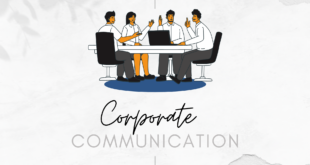Is your team looking a bit lackluster? If so, it may be time to spice your office up with a healthy dose of workplace flexibility. The uncertainty of the past year has taught the world a lot, namely that a flexible workplace makes for a happier, more productive, and more stable workforce.
From adopting a remote work structure to prioritizing a peppy company culture, keep reading for tips and tricks on achieving a more relaxed workplace.
1. Adopt a fully remote work structure

After a year where many office dwellers were suddenly yanked out of their cubicles and exposed to working from home for the first time, increasingly more employees and managers are interested in the possibility of a completely remote workplace.
A fully remote work structure is void of any physical office location, meaning that all employees permanently work from home. Coffee shop work sessions, Zoom calls, and virtual team happy hours galore. A fully remote work structure takes some time and effort to establish but can yield tremendous benefits in the form of increased productivity and employee autonomy. Here are a few essential pointers to consider if you or your company are thinking of taking operations online.
Invest in a digital mailbox
A digital mailbox allows your company to operate entirely remotely while still reaping the benefits of a physical address. With a digital mailbox, you manage your mail from the comfort of your makeshift home office rather than making the trek up to your on-site location to gather high-priority mail. Not to mention, by registering your digital mailbox address, you can dip into markets nationwide, effectively extending your brand reach. If this sounds appealing, check out a virtual office service like iPostal1.
Take stock of your current model
Is your workplace hybrid, with some employees in-person and others at home? Or are you going to reinvent the wheel of an in-office workplace completely? Either way, it’s essential to acknowledge your employee’s needs and what they will evolve to be as you start the transition to a fully remote workplace.
Run a trial
In a perfect world, everything you plan will go as you intend it to. However, it’s wishful thinking to assume that your remote workplace rollout will have ideal results the first time. Before exposing your whole company to new systems, give a subsection of the team a chance to participate, exposing any quirks or mishaps that could occur. A trial run will allow you to address any problems before the company-wide reveal.
Alert your team ASAP

Once your remote work structure is 100% happening, be sure to give your team all the information possible as soon as possible. Smooth transitions come to those who communicate, so be sure to clearly announce every phase of the plan. Full disclosure will limit inter-office whispers and give your employees a good idea of what to expect and when to expect it.
Invest in a virtual office
A virtual office allows for your company to operate fully remotely while still reaping the benefits of a physical address and office-related services. The meeting rooms that spurred some of your best ideas and phone services that keep your clients happy can still be a reality in a fully remote work environment. A virtual office gives you the benefits of an office without the overhead or extra expenses associated with a physical space. If this sounds appealing, check out a virtual office service like iPostal1.
2. Adapt to your employees

Does your team live and breathe for weekly lunches on the company’s dime? Or are they big-time travelers who would be thrilled with unlimited paid time off? Knowing the priorities of the people you are trying to please will make the process of enhancing workplace flexibility a whole lot easier.
Happy employees are productive, long-term employees. By determining what your team wants to gain from a flexible workplace, you are in a great position to make the changes that matter and save your breath on alterations that won’t hit home.
3. Encourage a life outside of the office

As much as every boss loves a wholly-dedicated employee, each team member must have an appropriate work-life balance. Flexible workplace culture enables employees to be well-rounded individuals. With a malleable schedule, employees can bond with family members and friends and nurture their passions, alongside their job responsibilities. Though it may sound counterintuitive, these alternative attention-grabbers actually increase the productivity and dedication that causes a company to thrive, given that it limits burnout.
Encouraging a fulfilling life outside the office will have your employees reaping the benefits of a flexible schedule and doing everything they can to prove its benefits.
4. Prioritize a positive culture

A positive, open environment brimming with positive communication skills is the secret sauce for a successful flexible workplace. If your employees feel comfortable letting you know what’s happening in their work or home life, they will likely be more accountable for their work and more loyal to the company. Though a company culture can be challenging to cultivate through a screen, simple words of encouragement and validation of ideas can go a long way.
5. Limit meetings

Every working professional has found themselves in the midst of a hair-pulling and nerve-grating meeting that lasted twenty minutes longer than it should have (and probably would have been better off as an email). To progress to a flexible workplace, limiting unnecessary meetings is critical.
When an employee has the power to manage their time independently, they can question whether or not a catch-up or kick-off is critical. Their checklist of priorities comes first, which allows for a realistic evaluation of the best uses of their time. An empowered employee that invites fewer people to unnecessary meetings and declines more unnecessary chats can maximize work hours and avert post-meeting grumbling.
6. Take breaks

Though fears of less-than-stellar work ethics are a common thread among remote managers, encouraging breaks can hugely benefit leadership. A rested employee is a productive one. Further, breaks allow workers to connect with their colleagues, take care of personal needs, and feel an overall decreased sense of resentment toward the time commitment their career involves.
Regardless of the degree of flexibility that your company decides to adopt, it is essential that every employee feels comfortable popping out for a five-minute breather to clear their head before ducking back into their tasks.
Before you go
A flexible workplace is a hot topic on everyone’s minds now that remote work has become not only feasible but occasionally superior. Should you decide to bend your staunch office rules and opt for a fully remote work environment, a flexible workplace is sure to leave your employees with a smile on their faces and a thoroughly checked off to-do list.
 Imagup General Magazine 2024
Imagup General Magazine 2024



